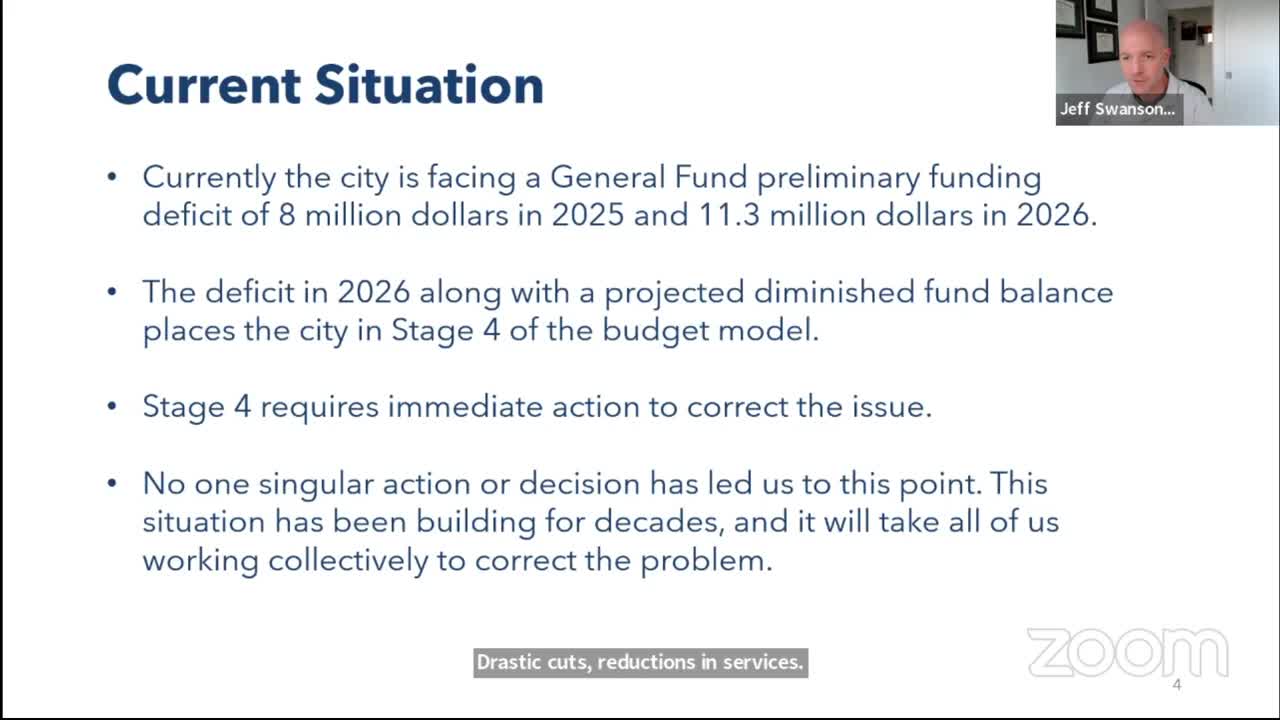City faces $11 million budget crisis as inflation soars
September 19, 2024 | Longview City, Cowlitz County, Washington
This article was created by AI summarizing key points discussed. AI makes mistakes, so for full details and context, please refer to the video of the full meeting. Please report any errors so we can fix them. Report an error »

In a recent government meeting, officials addressed significant budgetary challenges facing the city, revealing projected funding gaps of over $8 million for 2025 and $11.3 million for 2026. The discussions highlighted the impact of Initiative 747, which has constrained revenue growth since its inception in 2001, exacerbated by rising inflation and increased costs in labor and insurance.
City officials outlined a multi-stage budget model, emphasizing that the city is currently in a precarious financial position where expenditures are outpacing revenues. They noted that without intervention, the city could face severe cuts to services and potential layoffs by 2026. The meeting underscored the urgency of addressing these financial issues, with officials stressing the need for a collaborative approach to develop solutions.
Key strategies discussed included departmental and non-departmental budget reductions totaling approximately $4 million, as well as exploring additional revenue sources. One proposal involved adjusting the Business and Occupation (B&O) tax structure to increase revenue while alleviating the burden on smaller businesses. Officials suggested raising the tax threshold to $100,000, which would exempt nearly half of the current filers from taxation while still generating significant revenue.
The city is also considering the sale of underutilized assets, such as parking lots, to help bridge the funding gap. However, officials cautioned that these measures alone may not be sufficient to stabilize the budget without further revenue enhancements.
The meeting concluded with a commitment to transparency and ongoing dialogue with the community as the city navigates these financial challenges. The officials emphasized that the current situation is not the result of any single decision or group but rather a culmination of long-standing issues that require immediate and strategic action.
City officials outlined a multi-stage budget model, emphasizing that the city is currently in a precarious financial position where expenditures are outpacing revenues. They noted that without intervention, the city could face severe cuts to services and potential layoffs by 2026. The meeting underscored the urgency of addressing these financial issues, with officials stressing the need for a collaborative approach to develop solutions.
Key strategies discussed included departmental and non-departmental budget reductions totaling approximately $4 million, as well as exploring additional revenue sources. One proposal involved adjusting the Business and Occupation (B&O) tax structure to increase revenue while alleviating the burden on smaller businesses. Officials suggested raising the tax threshold to $100,000, which would exempt nearly half of the current filers from taxation while still generating significant revenue.
The city is also considering the sale of underutilized assets, such as parking lots, to help bridge the funding gap. However, officials cautioned that these measures alone may not be sufficient to stabilize the budget without further revenue enhancements.
The meeting concluded with a commitment to transparency and ongoing dialogue with the community as the city navigates these financial challenges. The officials emphasized that the current situation is not the result of any single decision or group but rather a culmination of long-standing issues that require immediate and strategic action.
View full meeting
This article is based on a recent meeting—watch the full video and explore the complete transcript for deeper insights into the discussion.
View full meeting
